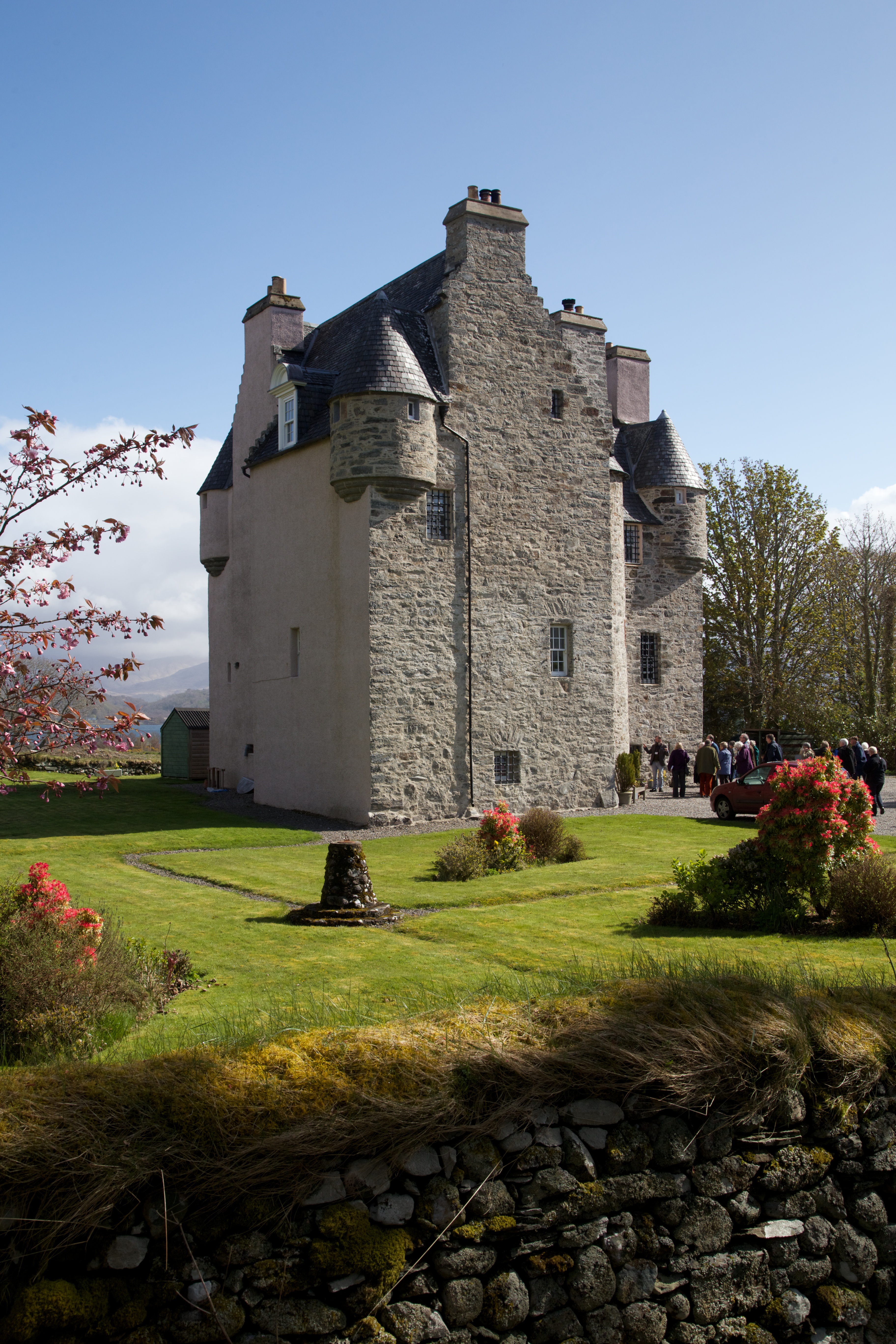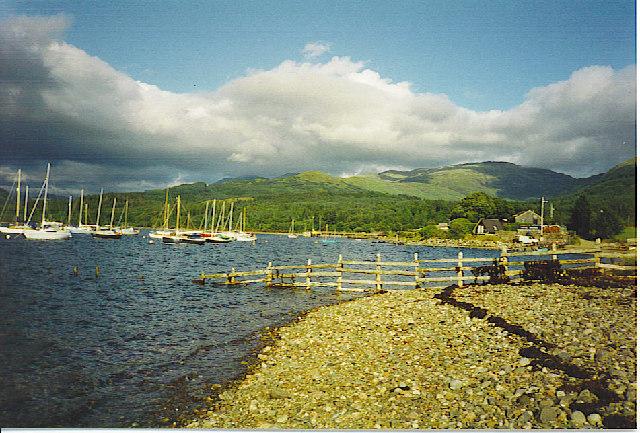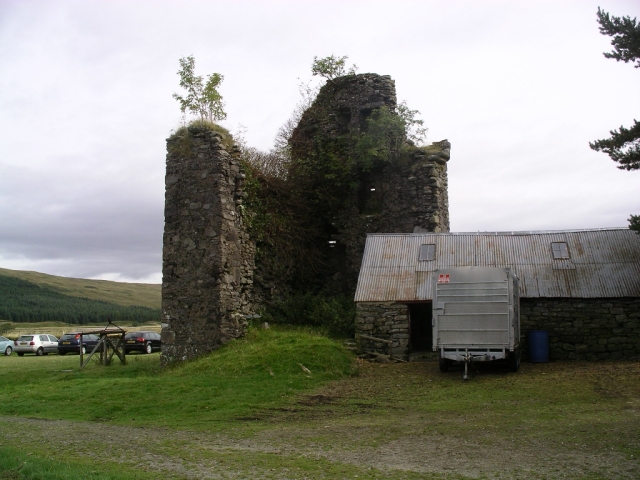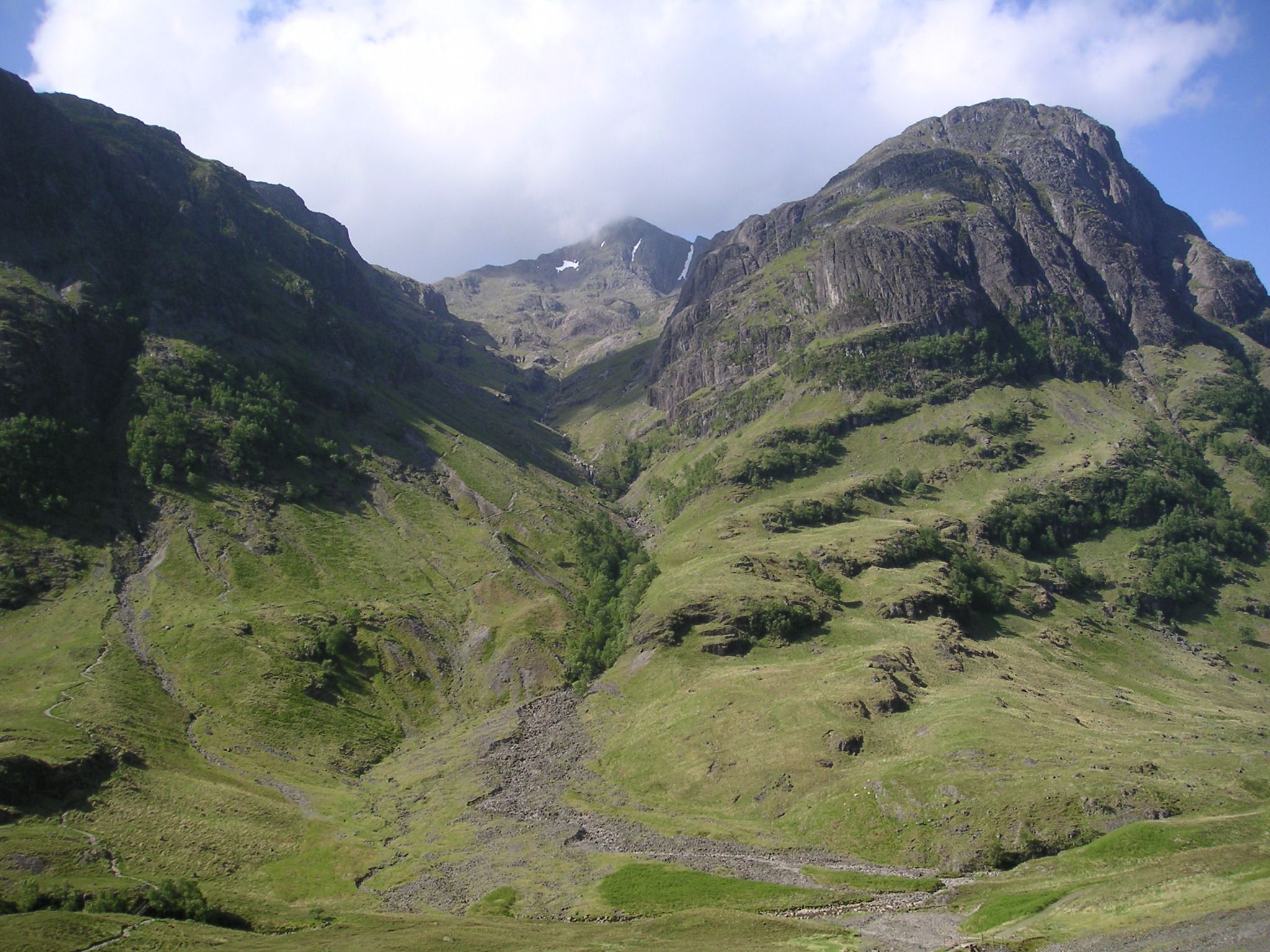|
Barcaldine Castle
Barcaldine Castle (also called the Black Castle) is a 17th-century tower house castle located at Barcaldine 9 miles north of Oban, Scotland. History The castle was built by Duncan Campbell of Glenorchy between 1601 and 1609. In 1692, the castle was attacked during the massacre of Glencoe. The castle fell into disrepair in the later 19th century, when Barcaldine House became the principal residence of the family. It was restored between 1897 and 1911. It was purchased in November 2009 by David Whitehead. Description The castle has a bottle dungeon and two hidden passageways. The castle offers a view of the Loch Creran and the Glen Coe Glen Coe ( gd, Gleann Comhann ) is a glen of volcanic origins, in the Highlands of Scotland. It lies in the north of the county of Argyll, close to the border with the historic province of Lochaber, within the modern council area of Highland ... mountains. The castle has been owned since November 2009 by David Whitehead. [...More Info...] [...Related Items...] OR: [Wikipedia] [Google] [Baidu] |
Barcaldine Castle - View From SW
Barcaldine may refer to: Australia * Barcaldine, Queensland, Australia ** Barcaldine Airport, Queensland Australia *Barcaldine Region, a local government area in Queensland, Australia ** Shire of Barcaldine, a former local government area in Queensland, Australia United Kingdom * Barcaldine (horse), a British Thoroughbred racehorse *Barcaldine, Argyll Barcaldine ( gd, Am Barra Calltainn) is a small settlement in Scotland centred on the historic Barcaldine House and located on the banks of Loch Creran between Oban and Ballachulish. There was formerly a railway station here. Barcaldine Castle ..., Scotland, United Kingdom {{disambiguation ro:Barcaldine ... [...More Info...] [...Related Items...] OR: [Wikipedia] [Google] [Baidu] |
Tower House
A tower house is a particular type of stone structure, built for defensive purposes as well as habitation. Tower houses began to appear in the Middle Ages, especially in mountainous or limited access areas, in order to command and defend strategic points with reduced forces. At the same time, they were also used as an aristocrat's residence, around which a castle town was often constructed. Europe After their initial appearance in Ireland, Scotland, the Stins, Frisian lands, Basque Country (greater region), Basque Country and England during the High Middle Ages, tower houses were also built in other parts of western Europe, especially in parts of France and Italy. In Italian medieval communes, urban ''palazzi'' with a very tall tower were increasingly built by the local highly competitive Patrician (post-Roman Europe), patrician families as power centres during times of internal strife. Most north Italian cities had a number of these by the end of the Middles Ages, but few no ... [...More Info...] [...Related Items...] OR: [Wikipedia] [Google] [Baidu] |
Barcaldine, Argyll
Barcaldine ( gd, Am Barra Calltainn) is a small settlement in Scotland centred on the historic Barcaldine House and located on the banks of Loch Creran between Oban and Ballachulish. There was formerly a railway station here. Barcaldine Castle is located a few kilometres to the west. The castle was built in the 15th century by Sir Douglas Campbell of Glenorchy (or Glen Orchy). There is also Barcaldine House Hotel. The town of Barcaldine in western Queensland, Australia Australia, officially the Commonwealth of Australia, is a Sovereign state, sovereign country comprising the mainland of the Australia (continent), Australian continent, the island of Tasmania, and numerous List of islands of Australia, sma ... is named (indirectly) after Barcaldine in Argyll.Reed, A.W. (1973). ''Place Names of Australia'', p. 22 Sydney: A.H. & A.W. Reed. . References Villages in Argyll and Bute Ports and harbours of Scotland {{Argyll-geo-stub ... [...More Info...] [...Related Items...] OR: [Wikipedia] [Google] [Baidu] |
Oban
Oban ( ; ' in Scottish Gaelic meaning ''The Little Bay'') is a resort town within the Argyll and Bute council area of Scotland. Despite its small size, it is the largest town between Helensburgh and Fort William. During the tourist season, the town can have a temporary population of up to over 24,000 people. Oban occupies a setting in the Firth of Lorn. The bay forms a near perfect horseshoe, protected by the island of Kerrera; and beyond Kerrera, the Isle of Mull. To the north, is the long low island of Lismore and the mountains of Morvern and Ardgour. Pre-history and archaeology Humans have used the site where Oban now stands since at least Mesolithic times, as evidenced by archaeological remains of cave dwellers found in the town. Just outside the town, stands Dunollie Castle, on a site that overlooks the main entrance to the bay and has been fortified since the Bronze Age. Just to the north of Oban, at Dunstaffnage, excavations in 2010, by Argyll Archaeology, in advanc ... [...More Info...] [...Related Items...] OR: [Wikipedia] [Google] [Baidu] |
Scotland
Scotland (, ) is a country that is part of the United Kingdom. Covering the northern third of the island of Great Britain, mainland Scotland has a border with England to the southeast and is otherwise surrounded by the Atlantic Ocean to the north and west, the North Sea to the northeast and east, and the Irish Sea to the south. It also contains more than 790 islands, principally in the archipelagos of the Hebrides and the Northern Isles. Most of the population, including the capital Edinburgh, is concentrated in the Central Belt—the plain between the Scottish Highlands and the Southern Uplands—in the Scottish Lowlands. Scotland is divided into 32 administrative subdivisions or local authorities, known as council areas. Glasgow City is the largest council area in terms of population, with Highland being the largest in terms of area. Limited self-governing power, covering matters such as education, social services and roads and transportation, is devolved from the Scott ... [...More Info...] [...Related Items...] OR: [Wikipedia] [Google] [Baidu] |
Duncan Campbell Of Glenorchy
Sir Duncan Campbell, 1st Baronet of Glenorchy (1545-1631) was a Scottish landowner and courtier. Career He was a son of Colin Campbell of Glenorchy and Katherine Ruthven. She was a daughter of William Ruthven, 2nd Lord Ruthven and Janet Haliburton, heiress of the Haliburtons of Dirleton Castle. He was born at Balloch, now called Taymouth Castle. Duncan became the 7th Laird of Glenorchy, and his shrewd, ruthless dealings as "Black Duncan" capped a spectacular rise in the family fortunes to national prominence in Scotland. He was knighted at the coronation of Anne of Denmark on 17 May 1590. James VI invited him to the baptism of Prince Henry in 1594, asking him to bring venison and wild fowls. In September 1590 John Murray of Tullibardine and his brother-in-law Robert Murray of Abercairnie were guests of Black Duncan at Balloch, now Taymouth Castle. On 1 August 1598 Glenorchy wrote to the English politician Sir Robert Cecil with thanks to Queen Elizabeth after his audience ... [...More Info...] [...Related Items...] OR: [Wikipedia] [Google] [Baidu] |
Glen Orchy
Glen Orchy ( gd, Gleann Urchaidh) is a glen in Argyll and Bute, Scotland. It runs from Bridge of Orchy to Dalmally. Geography Glen Orchy is about 17 km or 11 miles long, and runs south-west from Bridge of Orchy () to Dalmally () following the River Orchy through the Caledonian Forest. There are no settlements in the glen: just a few isolated buildings. The Eas Urchaidh and Eas a’ Chathaidh are waterfalls within the glen. The continuation westward past Dalmally to Loch Awe is known as the Strath of Orchy. The B8074 road runs the length of Glen Orchy. Name Glen Orchy was known by the by-name of Gleann Urchaidh nam badan (Glen Orchy of the copses), and the parish of Glen Orchy was An Dìseart (the hermitage), a name appearing in Clachan an Dìseirt (the village of the hermitage), the local Gaelic name of the village of Dalmally. History Glen Orchy was one of the major homes of Clan Gregor until the clan was outlawed in 1603 by King James VI. The settlement of Gleno ... [...More Info...] [...Related Items...] OR: [Wikipedia] [Google] [Baidu] |
Massacre Of Glencoe
The Massacre of Glencoe ( gd, Murt Ghlinne Comhann) took place in Glen Coe in the Highlands of Scotland on 13 February 1692. An estimated 30 members and associates of Clan MacDonald of Glencoe were killed by Scottish government forces, allegedly for failing to pledge allegiance to the new monarchs, William III and Mary II. Although the Jacobite rising of 1689 was no longer a serious threat by May 1690, unrest continued in the remote Highlands which consumed military resources the government needed for the Nine Years' War in Flanders. In late 1690, the Scottish government agreed to pay the Jacobite clan chiefs a total of £12,000 in return for swearing an oath of loyalty to William and Mary; however, disagreements over how to divide the money meant by December 1691 none of them had taken the oath. Under pressure from William, Secretary of State Lord Stair decided to make an example as a warning of the consequences for further delay. The Glencoe MacDonalds were not the only ... [...More Info...] [...Related Items...] OR: [Wikipedia] [Google] [Baidu] |
Barcaldine House
Barcaldine House is a historic mansion in Barcaldine near Oban, Scotland, now a hotel. History Campbell ownership 1709–1842 The lands were originally part of the extensive estates of the Campbell of Breadalbane, who had built Barcaldine Castle in about 1594, one of six castles including Kilchurn, Edinample and Taymouth Castle. At that time the lands extended from Loch Tay continuously to the west coast of Scotland. The house was originally built in 1709, by "Red Patrick", 4th (laird) of Barcaldine when the family abandoned the nearby Barcaldine Castle for a more comfortable home. The house became the home of his son by his first marriage, Duncan Campbell (1716–1784). Duncan's half brother (by Red Patrick's second wife) was Colin Campbell of Glenure, the Red Fox in RL Stevenson's '' Kidnapped'', who was assassinated in the woods at Lettermore near Duror on 14 May 1752. The question of who shot the Red Fox has become known as the Appin Mystery. The body of the Red Fox re ... [...More Info...] [...Related Items...] OR: [Wikipedia] [Google] [Baidu] |
Bottle Dungeon
A dungeon is a room or cell in which prisoners are held, especially underground. Dungeons are generally associated with medieval castles, though their association with torture probably belongs more to the Renaissance period. An oubliette (from french ''oublier'' meaning to ''forget'') or bottle dungeon is a basement room which is accessible only from a hatch or hole (an '' angstloch'') in a high ceiling. Victims in oubliettes were often left to starve and dehydrate to death, making the practice akin to—and some say an actual variety of—immurement. Etymology The word ''dungeon'' comes from French ''donjon'' (also spelled ''dongeon''), which means " keep", the main tower of a castle. The first recorded instance of the word in English was near the beginning of the 14th century when it held the same meaning as ''donjon''. The proper original meaning of "keep" is still in use for academics, although in popular culture it has been largely misused and come to mean a cell or "oubli ... [...More Info...] [...Related Items...] OR: [Wikipedia] [Google] [Baidu] |
Loch Creran
Loch Creran is a sea loch in Argyll, on the west coast of Scotland. It is about long from its head at Invercreran to its mouth on the Lynn of Lorne, part of Loch Linnhe. The loch separates the areas of Benderloch to the south and Appin to the north. The island of Eriska lies at the mouth of the loch. The loch is bridged at its narrowest point at Creagan, by the A828 road. The village of Barcaldine lies on the south shore of the loch. The loch narrows and becomes shallower at both Eriska and Creagan, meaning that tidal currents are accelerated through these points. This provides aeration and nutrition to the beds of flame shell and horse mussel that are a feature of the loch. Between these shallow zones lie deeper basins in which the water is more still, proving a habitat for Norway lobster and seapen. In 2014 the entire loch (an area of ) was declared a Nature Conservation Marine Protected Area, to protect its flame shell beds and quaternary geological features. Within ... [...More Info...] [...Related Items...] OR: [Wikipedia] [Google] [Baidu] |
Glen Coe
Glen Coe ( gd, Gleann Comhann ) is a glen of volcanic origins, in the Highlands of Scotland. It lies in the north of the county of Argyll, close to the border with the historic province of Lochaber, within the modern council area of Highland. Glen Coe is regarded as the home of Scottish mountaineering and is popular with hillwalkers and climbers. A 2010 review by Scottish Natural Heritage into the special qualities of Scotland's National scenic areas listed the "soaring, dramatic splendour of Glen Coe", and "the suddenness of the transition between high mountain pass and the lightly wooded strath" as being of note. The review also described the journey through the glen on the main A82 road as "one of the classic Highland journeys". The main settlement is the village of Glencoe located at the foot of the glen.Ordnance Survey Landranger 1:50000, Sheet 41 On the 13 February 1692, in the aftermath of the Jacobite uprising of 1689, an incident known as the Massacre of Glenco ... [...More Info...] [...Related Items...] OR: [Wikipedia] [Google] [Baidu] |





%2C_Highland_Improver_-_PG_2165_-_National_Galleries_of_Scotland.jpg)


